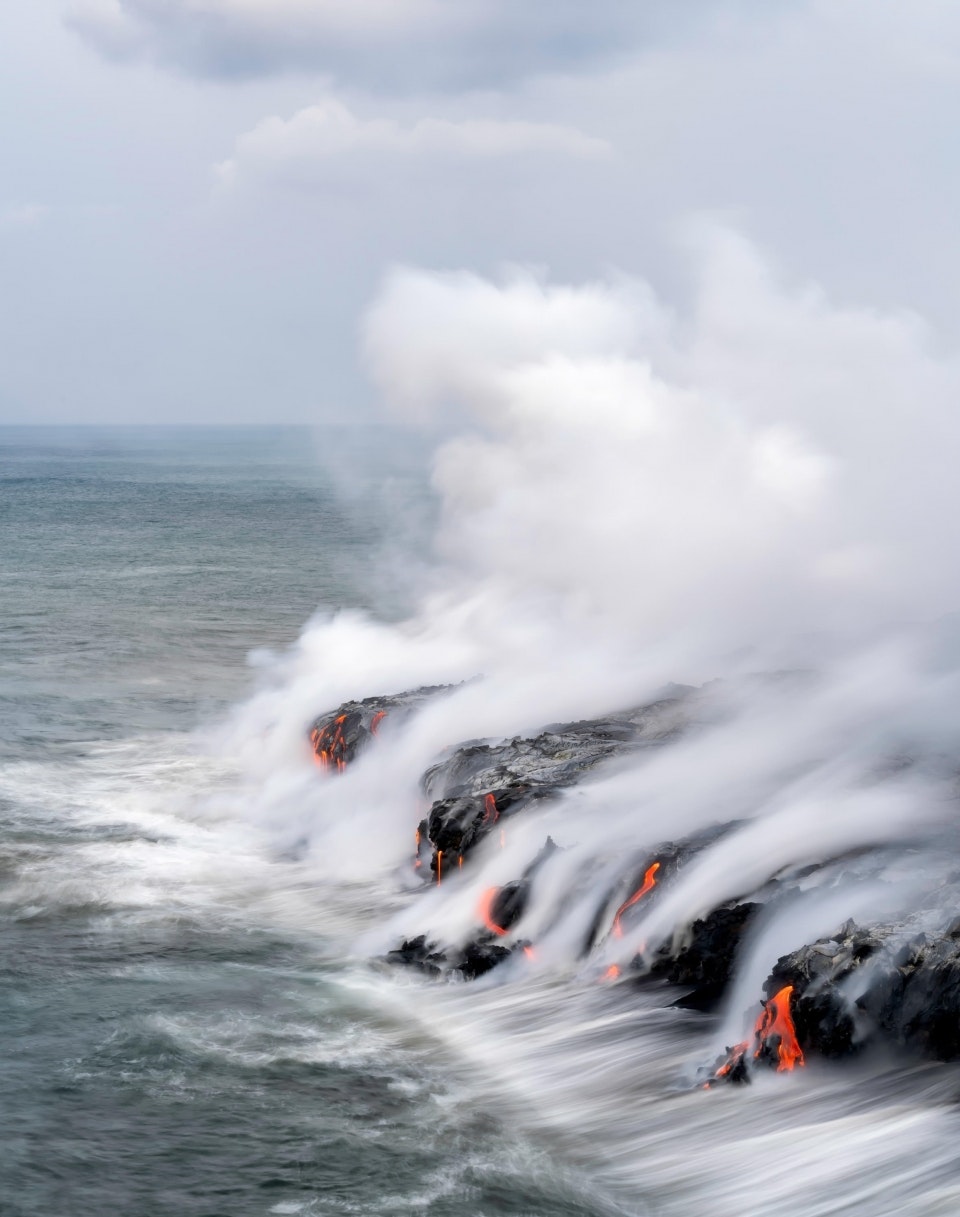
Hawai'i Volcanoes National Park

A spectacle, sublime and even appalling, presented itself before us. We stopped and trembled. Astonishment and awe for some moments rendered us mute, and, like statues, we stood fixed to the spot, with our eyes riveted on the abyss below.
Hawai'i Volcanoes National Park, established in 1916, shows the sheer power of volcanoes ability to shape and re-shape our land. These processes rewrite the shape of the land. Coupled with the special human history and rare ecosystems found here, Hawai'i Volcanoes National Park is a special place in America to be sure.
In addition to Mauna Loa, the park includes Kilauea, the world's most active volcano, which offers scientists insights on the birth of the Hawaiian Islands and visitors views of dramatic volcanic landscapes.
Over half of the park is designated wilderness and provides unusual hiking and camping opportunities. In recognition of its outstanding natural values, Hawai'i Volcanoes National Park was designated as an International Biosphere Reserve in 1980 and a World Heritage Site in 1987.
Park Updates
-
UpdateNPF Invests $4.6 Million to Tell a More Complete American Story
-
UpdateNPF Invests $5.8 Million in Service Corps Program
-
UpdateNPF Invests in Park Partner Organizations to Further Capacity-Building Goals
-
UpdateNPF’s ParkVentures Program Awards $2.2 Million to Affinity Groups
-
Update$4.4 Million to Fund 99 Open OutDoors for Kids Projects for 2023 – 2024 School Year, Hitting Program Milestone
-
UpdateNPF Invests $5 Million in Service Corps Programs
-
UpdateNPF Invests $1.7 Million in Park Partners